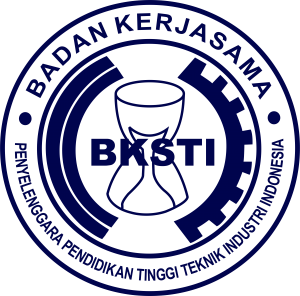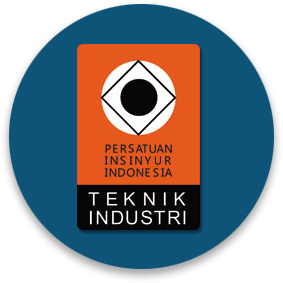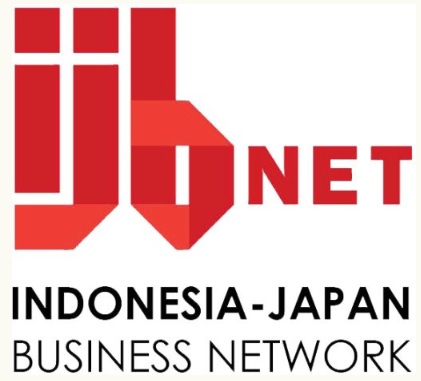Tinjauan Pustaka Sistematik Implementasi Technology Acceptance Model (TAM) dalam Organisasi
Abstract
Perkembangan Industri 4.0 pada lingkungan bisnis yang kompleks membuat organisasi melakukan penyesuaian strategi seiring berkembangnya inovasi otomatisasi, super computer, artificial intelligence, dan fleksibilitas pola kerja berbasis digital. Technology Acceptance Model (TAM) adalah sistem informasi yang membuat model tentang bagaimana pengguna bersedia menerima dan menggunakan teknologi. Model ini pertama kali diperkenalkan oleh Davis pada tahun 1989. Kedua variabel model TAM yaitu kemanfaatan (usefulness) dan kemudahan penggunaan (ease of use) dapat menjelaskan aspek keperilakuan pemakai. Ciri khas dari Model TAM adalah sederhana namun bisa memprediksi penerimaan maupun penggunaan teknologi. Tujuan penulisan paper ini adalah untuk mengamati apakah konsep dan metode tersebut masih relevan serta efektif untuk digunakan berdasarkan literatur pada berbagai sektor industri. Hasilnya menunjukan bahwa TAM adalah model yang dapat menjelaskan bahwa persepsi pemakai akan menentukan sikapnya dalam penerimaan penggunaan teknologi informasi masih sangat relevan untuk digunakan saat ini dalam berbagai sector usaha.
Full Text:
PDFReferences
Al-Maatouk, Q., Othman, M. S., Aldraiweesh, A., Alturki, U., Al-Rahmi, W. M., & Aljeraiwi, A. A. (2020). Task-technology fit and technology acceptance model application to structure and evaluate the adoption of social media in academia. IEEE Access, 8, 78427–78440. https://doi.org/10.1109/ACCESS.2020.2990420
Aljarboa, S., & Miah, S. J. (2020). An Integration of UTAUT and Task-Technology Fit Frameworks for Assessing the Acceptance of Clinical Decision Support Systems in the Context of a Developing Country. An Integration of UTAUT and Task-Technology Fit Frameworks for Assessing the Acceptance of Clinical Decision Support Systems in the Context of a Developing Country.
Baby, A., & Kannammal, A. (2020). Network Path Analysis for developing an enhanced TAM model: A user-centric e-learning perspective. Computers in Human Behavior, 107(September 2018), 106081. https://doi.org/10.1016/j.chb.2019.07.024
Boughzala, I. (2014). How generation Y perceives social networking applications in corporate environments. Integrating Social Media into Business Practice, Applications, Management, and Models, April, 162–178. https://doi.org/10.4018/978-1-4666-6182-0.ch009
Buavirat, W., Kreesuradej, W., & Chaveesuk, S. (2019). The framework of government cloud computing adoption with TAM in Thailand. PervasiveHealth: Pervasive Computing Technologies for Healthcare, 196–200. https://doi.org/10.1145/3357419.3357458
Daradkeh, M. (2019). Visual analytics adoption in business enterprises: An integrated model of technology acceptance and task-technology fit. International Journal of Information Systems in the Service Sector, 11(1), 68–89. https://doi.org/10.4018/IJISSS.2019010105
Davis, F. D. (1989). Perceived Usefulness, Perceived Ease of Use, and User Acceptance of Information Technology. Management Information Systems Research Center, University of Minnesota Is Collaborating with JSTOR to Digitize, Preserve and Extend Access to MIS Quarterly, 13(3), 319–340. https://doi.org/10.5962/bhl.title.33621
Davis, F. D., Bagozzi, R. ., & Warshaw, P. . (1989). User acceptance of computer technology: a comparison of two theoretical models. Management Science, 35(8), 982–1003.
Doo, M. Y., & Bonk, C. J. (2021). Cognitive Instrumental Processes of Flipped Learners: Effects of Relevance for Learning, Quality of Learning Outcomes, and Result Demonstrability. Journal of Educational Computing Research, 59(6), 1093–1113. https://doi.org/10.1177/0735633121989128
Ghasemi Poor Sabet, P., Askaripour Lahiji, H., Aadal, H., Bagheri Fard, A., & Golchin Rad, K. (2013). Description of Organization Failure Process and the Way of Prevention by a Simulated Model Originated from Accident Domino Theory. J. Basic. Appl. Sci. Res, 3(9), 428–433.
Hamutoğlu, N. B. (2020). Acceptance and Use of Cloud Computing Systems in Higher Education: An Application of TAM 3 within the Socio-cultural context of Educational Institutions. Malaysian Online Journal of Educational Technology, 8(4), 1–22. https://doi.org/10.17220/mojet.2020.04.001
Hong, X., Zhang, M., & Liu, Q. (2021). Preschool Teachers’ Technology Acceptance During the COVID-19: An Adapted Technology Acceptance Model. Frontiers in Psychology, 12(June). https://doi.org/10.3389/fpsyg.2021.691492
Islami, M. M., Asdar, M., & Baumassepe, A. N. (2021). Analysis of Perceived Usefulness and Perceived Ease of Use to the Actual System Usage through Attitude Using Online Guidance Application. Hasanuddin Journal of Business Strategy, 3(1), 52–64. https://doi.org/10.26487/hjbs.v3i1.410
Izuagbe, R., Olawoyin, O. R., Nkiko, C., Yusuf, F., Iroaganachi, M., Ilogho, J., & Ifijeh, G. I. (2021). Impact analysis of e-Databases’ job relevance, output quality and result demonstrability on faculty research motivation. Library Hi Tech. https://doi.org/10.1108/LHT-03-2020-0050
Jilcha, K., & Kitaw, D. (2017). Industrial occupational safety and health innovation for sustainable development. Engineering Science and Technology, an International Journal, 20(1), 372–380. https://doi.org/10.1016/j.jestch.2016.10.011
Jogiyanto, H. M. (2007). Sistem informasi keperilakuan. Andi Offse.
Kaewsaiha, P., & Chanchalor, S. (2021). Factors affecting the usage of learning management systems in higher education. Education and Information Technologies, 26(3), 2919–2939. https://doi.org/10.1007/s10639-020-10374-2
Kar, S., Kar, A. K., & Gupta, M. P. (2021). Industrial Internet of Things and Emerging Digital Technologies-Modeling Professionals’ Learning Behavior. IEEE Access, 9(Ml), 30017–30034. https://doi.org/10.1109/ACCESS.2021.3059407
Katadata.co.id. (2021). Perbaikan Infrastruktur Dongkrak Daya Saing Digital Indonesia Artikel ini telah tayang di Katadata.co.id dengan judul “Perbaikan Infrastruktur Dongkrak Daya Saing Digital Indonesia” , https://katadata.co.id/stevanny/infografik/605b0a447c64c/perbaikan-infr.
Khoza, S., de Beer, L. T., van Niekerk, D., & Nemakonde, L. (2021). A gender-differentiated analysis of climate-smart agriculture adoption by smallholder farmers: application of the extended technology acceptance model. Gender, Technology and Development, 25(1), 1–21. https://doi.org/10.1080/09718524.2020.1830338
Kushatmaja, R. P., & Suryani, E. (2019). Analysis of Factors Affecting Edmodo Adoption as Learning Media Using Technology Acceptance Model 2 (TAM 2). IPTEK Journal of Proceedings Series, 0(5), 574. https://doi.org/10.12962/j23546026.y2019i5.6436
Kusuma Putri, T. L., Budi Santoso, P., & Choiri, M. (2014). Perancangan Sistem Informasi Manajemen Health & Safety Environment dengan menggunakan Microsoft Excel 2007 dan Makro VBA (Studi Kasus: PT. Beiersdorf Indonesia Malang. Jurnal Rekayasa Dan Manajemen Sistem Industri, 2(No. 4), 750–760.
Livinus, V., Adhikara, M. F. A., & Kusumapradja, R. (2021). Hospital Management Information System Usefulness in The Health Services Industry at Indonesia: Mandatory or Voluntary? JMMR (Jurnal Medicoeticolegal Dan Manajemen Rumah Sakit), 10(1), LAYOUTING. https://doi.org/10.18196/jmmr.v10i1.10296
Merdeka.com. (2021). Kemenaker Catat Kecelakaan Kerja di 2020 Naik Menjadi 177.000 Kasus.
Nguyen, X. A., Pho, D. H., Luong, D. H., & Cao, X. T. A. (2021). Vietnamese Students’ Acceptance of Using Video Conferencing Tools in Distance Learning in COVID-19 Pandemic. Turkish Online Journal of Distance Education, 22(3), 139–162. https://doi.org/10.17718/tojde.961828
Ostrowski, P., Wrycza, S., Gajda, D., & Marcinkowski, B. (2021). Decision factors behind cisco networking hardware acceptance in business environments. Journal of Theoretical and Applied Electronic Commerce Research, 16(4), 1097–1119. https://doi.org/10.3390/jtaer16040062
Poor Sabet, P. G. (2013). Application of Domino Theory to Justify and Prevent Accident Occurance in Construction Sites. IOSR Journal of Mechanical and Civil Engineering, 6(2), 72–76. https://doi.org/10.9790/1684-0627276
Putra, R. D., & Samopa, F. (2018). Analysis of Factors Affecting The Acceptance of Surabaya E-Government Service Using Technology Acceptance Model (TAM) 3: A Case Study of E-Lampid. 157(Miseic), 122–126. https://doi.org/10.2991/miseic-18.2018.30
Rahi, S., Khan, M. M., & Alghizzawi, M. (2021). Extension of technology continuance theory (TCT) with task technology fit (TTF) in the context of Internet banking user continuance intention. International Journal of Quality and Reliability Management, 38(4), 986–1004. https://doi.org/10.1108/IJQRM-03-2020-0074
Rakhmawati, J., Suroto, & Setyaningsih, Y. (2021). Unsafe Action dan Unsafe Condition: Studi Literatur pada Nelayan yang Mengalami Kecelakaan Kerja. Jurnal Ilmiah Permas: Jurnal Ilmiah STIKES Kendal, 11(2), 291–300.
Ramdan, I. M., & Handoko, H. N. (2016). Work Accident of Informal Construction Workers in District “ X ” Samarinda City. Jurnal Mkmi, 12(1), 1–6.
Saroia, A. I., & Gao, S. (2019). Investigating university students’ intention to use mobile learning management systems in Sweden. Innovations in Education and Teaching International, 56(5), 569–580. https://doi.org/10.1080/14703297.2018.1557068
Srinivasu, B., Professor, A., & Srinivasa Rao, P. (2013). Infrastructure Development and Economic growth: Prospects and Perspective. Journal of Business Management & Social Sciences Research, 2(1), 2319–5614.
Taufik, N., & Hanafiah, M. H. (2019). Airport passengers’ adoption behaviour towards self-check-in Kiosk Services: the roles of perceived ease of use, perceived usefulness and need for human interaction. Heliyon, 5(12). https://doi.org/10.1016/j.heliyon.2019.e02960
Venkatesh, V., & Davis, F. D. (2000). Theoretical extension of the Technology Acceptance Model: Four longitudinal field studies. Management Science, 46(2), 186–204. https://doi.org/10.1287/mnsc.46.2.186.11926
Venkatesh, V., & Morris, M. G. (2000). Why don’t men stop asking for directions? Gender , Social Influence and their role in society. MIS Quarterly, 24(1), 115–139.
Wahyuningtyas, Y. F., & Widiastuti, D. A. (2017). Analisis Pengaruh Persepsi Risiko, Kemudahan Dan Manfaat Terhadap Keputusan Pembelian Secara Online (Studi Kasus Pada Konsumen Barang Fashion Di Facebook). Kajian Bisnis STIE Widya Wiwaha, 23(2), 112–120. https://doi.org/10.32477/jkb.v23i2.208
Wang, B. (2021). Safety intelligence as an essential perspective for safety management in the era of Safety 4.0: From a theoretical to a practical framework. Process Safety and Environmental Protection, 148, 189–199. https://doi.org/10.1016/j.psep.2020.10.008
Wismantoro, Y., Himawan, H., & Widiyatmoko, K. (2019). Using Smartphone in Batik and Traditional Textile: Intention Measurement and TAM Approach. 100(Icoi), 254–260. https://doi.org/10.2991/icoi-19.2019.43
Yuen, K. F., Cai, L., Qi, G., & Wang, X. (2021). Factors influencing autonomous vehicle adoption: an application of the technology acceptance model and innovation diffusion theory. Technology Analysis and Strategic Management, 33(5), 505–519. https://doi.org/10.1080/09537325.2020.1826423
Zarafshani, K., Solaymani, A., D’Itri, M., Helms, M. M., & Sanjabi, S. (2020). Evaluating technology acceptance in agricultural education in Iran: A study of vocational agriculture teachers. Social Sciences & Humanities Open, 2(1), 100041. https://doi.org/10.1016/j.ssaho.2020.100041
Zhang, J., Zhang, R., Xu, J., Wang, J., & Shi, G. (2021). Infrastructure investment and regional economic growth: Evidence from yangtze river economic zone. Land, 10(3), 1–14. https://doi.org/10.3390/land10030320
DOI: http://dx.doi.org/10.22441/MBCIE.2022.012
Refbacks
- There are currently no refbacks.
Copyright (c) 2022 Prosiding Seminar Nasional Mercu Buana Conference on Industrial Engineering
Journal ISSN:
| e-ISSN | |
| 2988-4284 |
Tim Editorial Office
Proceeding Mercu Buana Conference on Industrial Engineering
Program Studi Magister Teknik Industri Universitas Mercu Buana
Jl. Raya Meruya Selatan No. 1 Kembangan Jakarta Barat
Email: [[email protected]]
Website: https://publikasi.mercubuana.ac.id/index.php/mbcie/
The Journal is Indexed and Journal List Title by:
in Collaboration with:








